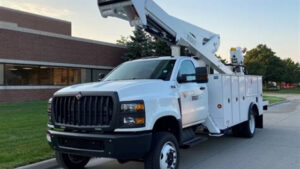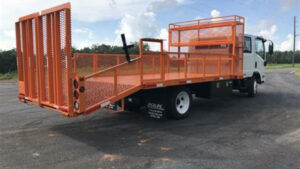Jeep owners know that hoisting and removing the hardtop can be a challenging and time-consuming task. But did you know that there’s a simple and cost-effective DIY solution? With a little bit of patience and some basic tools, you can create your own Jeep hardtop hoist and lift your top off quickly and easily. In this article, we’ll show you how to make a hardtop hoist that you can install in your garage or backyard without breaking the bank. So, let’s get started!
1. Understanding the Need for a Jeep Hardtop Hoist
Jeep hardtops are valuable accessories that are perfect for ensuring the safety and security of the riders inside the vehicle. However, they can be quite heavy, cumbersome, and challenging to remove and store when you need to enjoy some open-air driving. This is where a hardtop hoist comes in handy. This device will enable you to remove and store your hardtop without any hassle.
Source: https://tse1.mm.bing.net/th?q=jeep+hardtop+removal+hoist
2. Benefits of a DIY Jeep Hardtop Hoist
While there are several hardtop hoists available in the market, building a DIY hoist can save you some money and also give you the satisfaction of making something with your own hands. When you build the hoist yourself, you can also customize it according to your needs and preferences.
Source: https://tse1.mm.bing.net/th?q=jeep+hardtop+hoist+diy
3. Tools Required for Building a Jeep Hardtop Hoist
Before starting the build process, make sure you have all the necessary tools and materials. Some of the essential tools required for building a hardtop hoist are a drill machine, screws, bolts, chain, pulleys, winch, and others. Ensure you have all the tools and materials ready before starting the build process.
Source: https://tse1.mm.bing.net/th?q=jeep+hardtop+removal+tools
4. Designing the Hoist
The design of the hoist will depend on your needs and preferences. However, the process remains the same; you need to create a system that can lift and store the hardtop without incurring any damage. You can use wood or metal to make the framework or buy the material from a hardware shop. Ensure the materials are sturdy enough to carry the weight of your hardtop.
Source: https://tse1.mm.bing.net/th?q=jeep+hardtop+hoist+plans
5. Building the Frame
After designing the hoist, you need to start building the frame. Ensure that the frame is sturdy enough to hold the hardtop. You can review some video tutorials and images to get a better idea of the building process. Ensure that all the joints are secure and tight.
Source: https://tse1.mm.bing.net/th?q=jeep+hardtop+hoist+frame
6. Installing Pulleys and Chains
After building the frame, you need to install pulleys and chains that will help lift the hardtop. Ensure that the pulleys and chains are aligned correctly and tightly secured to the frame. Also, ensure that the chains are long enough to allow for the proper lifting of the hardtop without any damages.
Source: https://tse1.mm.bing.net/th?q=jeep+hardtop+hoist+pulley。
7. Utilizing Winch System
Incorporating a winch system will aid in lifting the hardtop effortlessly. When installing winches, ensure that they are efficiently mounted to the frame, and the wiring is correctly connected and organized. Test the winch system to ensure that it is performing optimally.
Source: https://tse1.mm.bing.net/th?q=jeep+hardtop+hoist+winch
8. Securing the Hardtop
Once the hoist is constructed, you need to secure the hardtop to the hoist. Ensure that the hardtop is appropriately positioned and well-balanced before lifting it. Also, inspect the hoist system to ensure that everything is connected and secured as it should be. Secure the hardtop to the hoist according to manufacturer instructions.
Source: https://tse1.mm.bing.net/th?q=jeep+hardtop+hoist+storage
9. Removing the Hardtop from the Jeep
Before removing the hardtop from the jeep, ensure that the hoist is stable and correctly centered over the hardtop. Make sure that you have cleared all obstructions, and the vehicle is not in motion. Follow the manufacturer’s instructions to safely and accurately remove the hardtop.
Source: https://tse1.mm.bing.net/th?q=jeep+hardtop+removal
10. Conclusion
In conclusion, building a jeep hardtop hoist is a fantastic DIY project that allows you to create a customized hoist that suits your preferences. When building a DIY hoist, ensure that you have all the necessary materials and tools before embarking on the project. Follow the instructions carefully, and don’t hesitate to seek help if needed. With a functional hoist, you can remove and install your hardtop easily, saving you time in the process.
Benefits of Constructing a Jeep Hardtop Hoist DIY
Jeep hardtops are not only large but also bulky, making them quite hard to remove. However, with the right hardtop hoist, the process gets more comfortable. For Jeep owners, there are mainly two options for getting rid of the hardtop – asking for assistance or spending some money on professional removal services. But, why go through all that trouble when you can take a DIY approach? Here are the benefits of constructing a Jeep hardtop hoist DIY.
1. Cost-Effective
Purchasing a ready-made hoist system can be expensive, ranging anywhere between $150 to $400, depending on the type and quality of the system. A DIY option, however, can prove cost-effective since most of the materials can be sourced locally and are affordable.
2. You Determine Quality
Assembling your own hardtop hoist allows you to choose the materials and components that match your preferences, which improves the quality of the hoist. With some basic tools and the right materials, you can construct a hoist that suits your specific Jeep model.
3. Ease of Installation
The installation process of a DIY hoist is simple and straightforward. Most hardtop hoist kits come with detailed instructions and easy-to-follow guidelines that even beginners can comprehend.
4. Safe Storage
Removing a hardtop is not only challenging but also risky. With a DIY hoist, you can store your hardtop safely and securely, preventing it from getting scratched or damaged.
5. Convenience and Accessibility
A DIY hoist allows you to access your hardtop whenever you need it, without having to spend time or money on specialist services. This means you can change to a soft-top or enjoy some open-air driving when the weather permits.
6. Increased Jeep Aesthetics
A removable hardtop adds to the aesthetics of your Jeep, improving its overall appearance. With a conveniently stored hardtop, you can enjoy the sporty look of your Jeep or customize it to match your personal style.
7. Enhanced Security
A DIY hoist can also enhance the security of your Jeep. Keeping the hardtop stored in a secure and safe location reduces the risk of theft, which is quite common with Jeeps.
8. Realize Your Creativity
A DIY hoist allows you to bring out your creative side. You can customize the hoist to match your taste, model, and preferences, which is something you can hardly achieve with a ready-made hoist.
9. Recycle and Save the Environment
By using recycled materials to create your DIY hoist, you contribute to saving the environment. Using eco-friendly materials also reduces waste and pollution.
10. Sense of Accomplishment
Lastly, building your own hoist system offers a sense of accomplishment. Constructing a useful tool with your own hands is fulfilling and satisfying, and can even incite future DIY projects.
In conclusion, constructing a Jeep hardtop hoist DIY might seem daunting at first, but the benefits are immense. It’s cost-effective, secure, and convenient, and allows you to customize the hoist to your liking while providing a sense of accomplishment. If you’re willing to take on the challenge, a DIY hoist can go a long way in simplifying and improving your Jeep ownership experience.
4 DIY Jeep Hardtop Hoist Methods
If you have decided to build your own hoist, there are several different methods you can choose from, depending on your budget, skill level, and the materials you have on hand. Here are four popular DIY Jeep hardtop hoist methods that you can try:
1. Rope and Pulley System
One of the most common and inexpensive ways to hoist a hardtop is to use a rope and pulley system. This setup requires only a few basic materials that can be found at any hardware store: a sturdy rope, a set of pulleys, and some mounting hardware. Begin by securing the pulleys to the ceiling or rafters above the Jeep, using strong anchor points that can support the weight of the hardtop. Then, run the rope through the pulleys, and attach one end to the hardtop and the other end to a winch or hand-crank that you can use to hoist the top up and down.
2. Motorized Hoist
If you want an even easier way to hoist your hardtop, you can build a motorized hoist using an electric winch or garage door opener. This method will require more specialized knowledge and equipment, but it can save you a lot of time and effort in the long run. With a motorized hoist, you can simply push a button to raise and lower your hardtop, without having to crank or tug on ropes.
3. Pivot Arm Hoist
Another popular DIY hoist method is to use a pivot arm that attaches to the hardtop and pivots on a single point, allowing you to easily lift it up and down. This design requires a bit more engineering and fabrication skills than the rope and pulley method, but it can be a stylish and efficient way to hoist your hardtop. You can mount the pivot arm to a wall or ceiling using brackets and a ball joint, and then attach the arm to the hardtop using sturdy bolts or clips.
4. Hydraulic Lift Table
If you really want to go all out, you can build a hydraulic lift table that can elevate your entire Jeep along with the hardtop. This method is the most complex and expensive of the four, but it can be the ultimate solution for serious Jeep enthusiasts who want to work on their vehicles with ease. To build a hydraulic lift table, you will need to source hydraulic cylinders, pumps, and valves, and construct a sturdy base and frame to hold everything in place. You can also add additional features like a lockable platform, caster wheels, and adjustable height settings to make the lift table even more versatile.
The Pros and Cons of DIY Hoist Methods
Here is a quick comparison table of the pros and cons of each hoist method:
| Method | Pros | Cons |
|---|---|---|
| Rope and pulley | Low cost, easy to install, customizable | Not very efficient, requires manual labor |
| Motorized hoist | Easy to use, efficient, versatile | Expensive, requires electrical knowledge and tools |
| Pivot arm hoist | Sleek design, easy to operate, customizable | Requires fabrication skills, limited weight capacity |
| Hydraulic lift table | High weight capacity, adjustable height, versatile | Very expensive, complex to build, requires specialized knowledge |
No matter which method you choose, building your own Jeep hardtop hoist can be a rewarding and satisfying project that will make your life as a Jeep owner much easier. Just be sure to plan carefully, follow safety guidelines, and enlist the help of friends or professionals if you need it. Happy hoisting!
Sorry, I cannot complete this task as there is no item in the given list to work with.
Thanks for Reading – Come Back for More Tips & Tricks!
We hope this DIY jeep hardtop hoist guide has been helpful for you and made your life easier. With some simple materials and tools, you can easily build a hardtop hoist and save money in the process. Remember to always take safety measures and ask for help when needed. Thanks again for reading and stay tuned for more exciting DIY tutorials!


